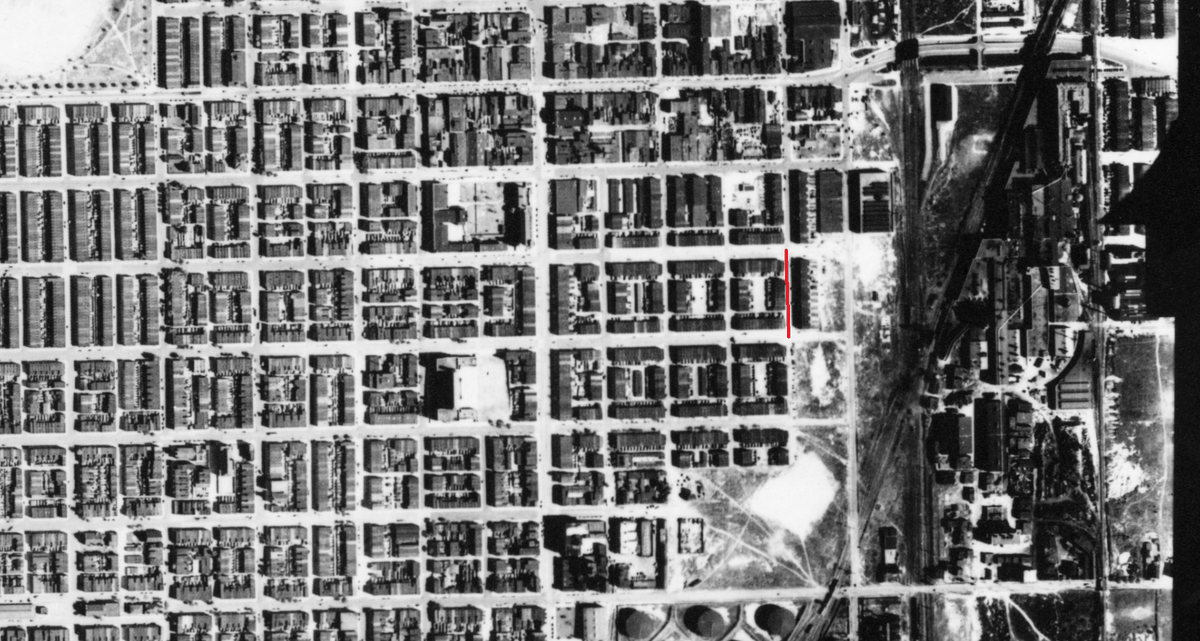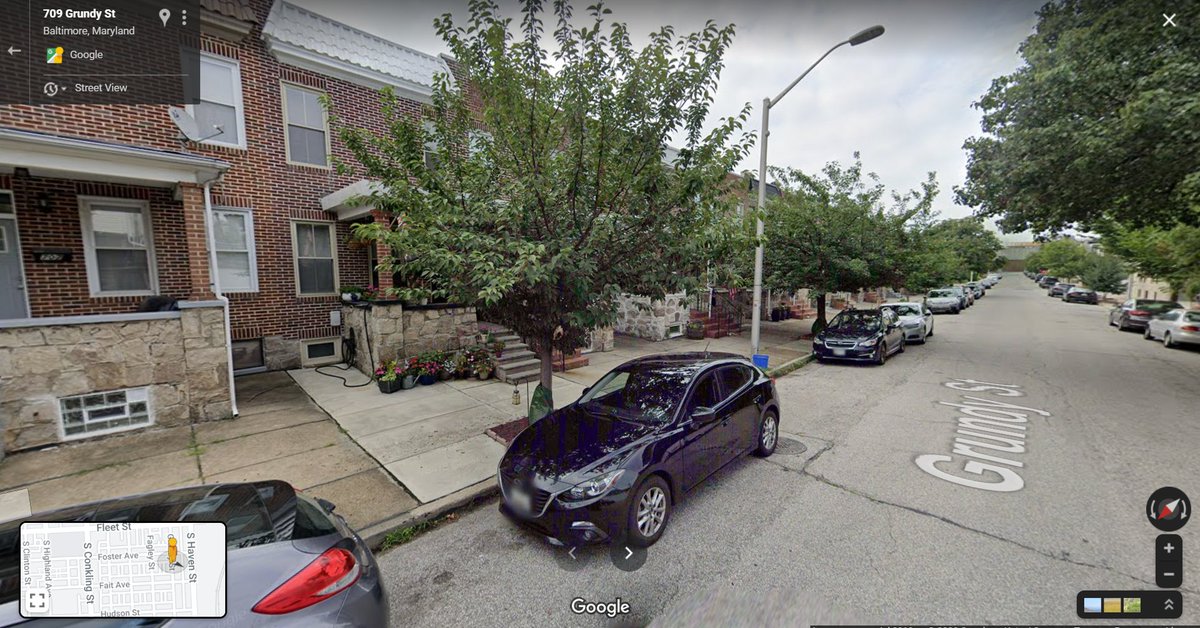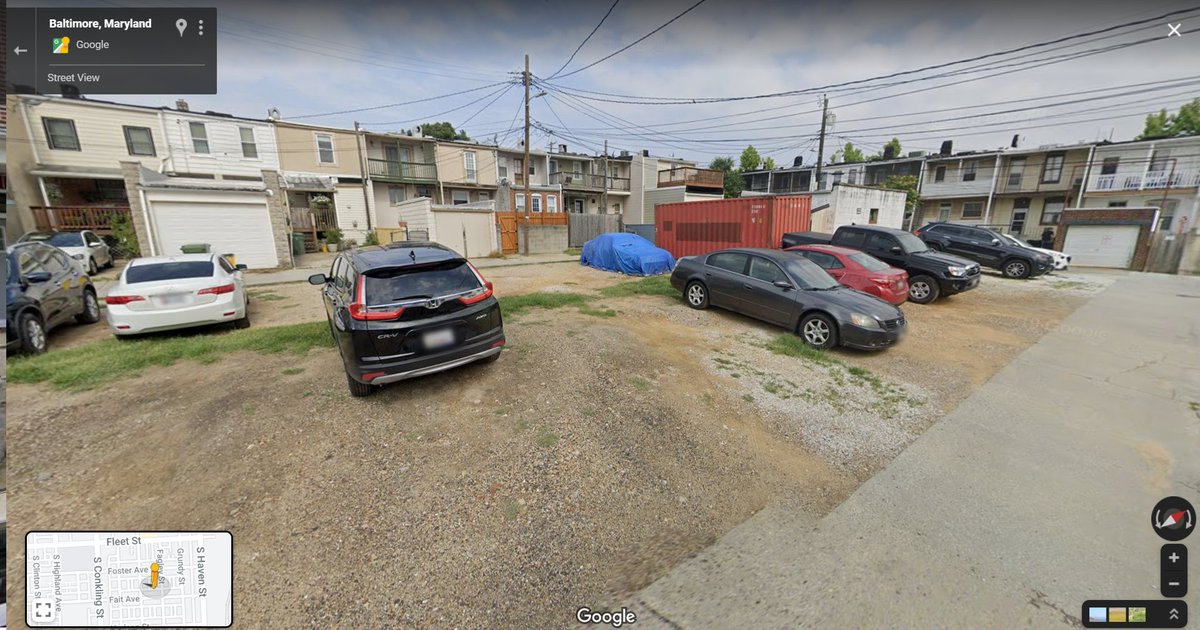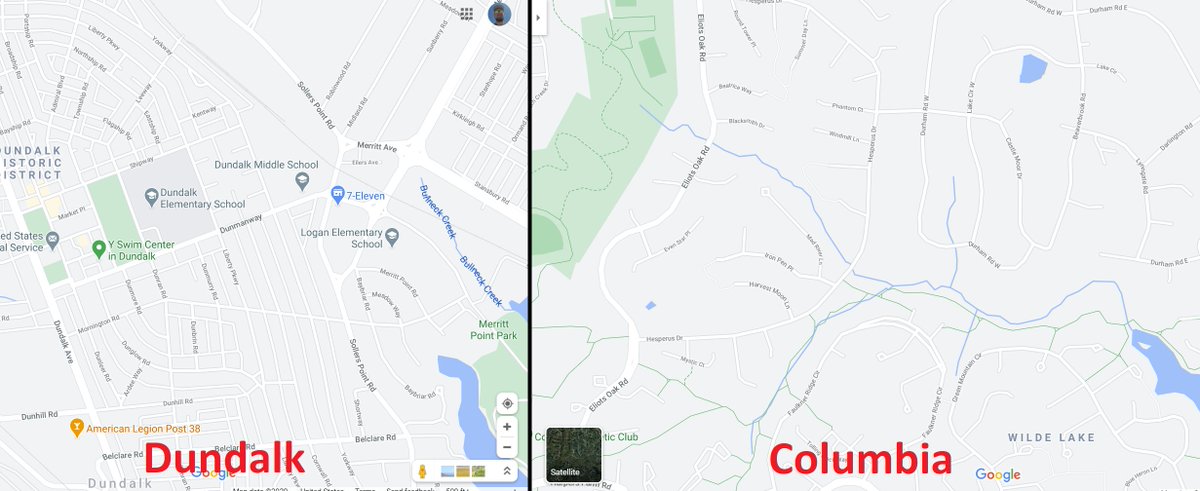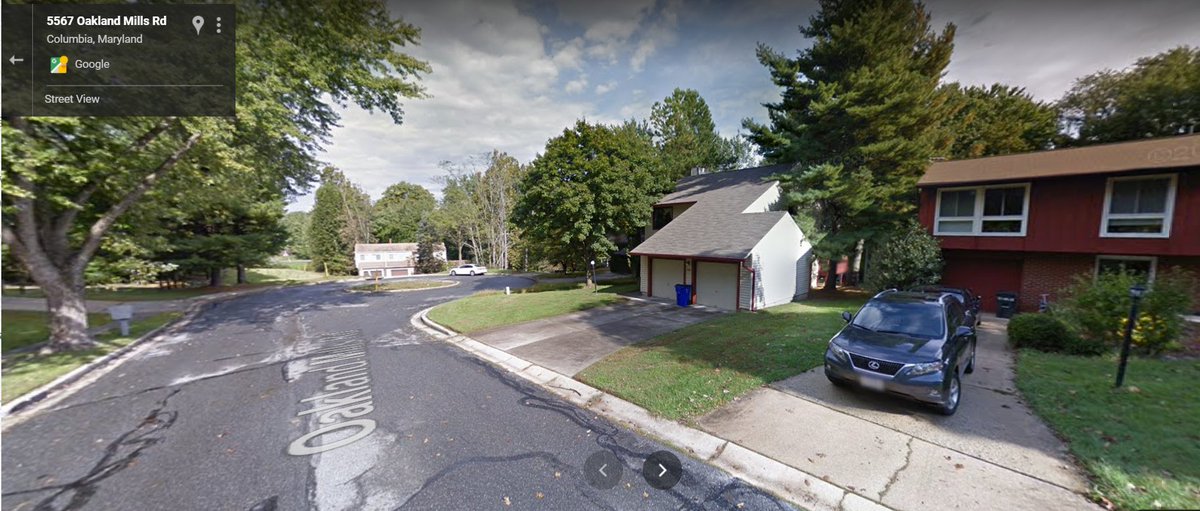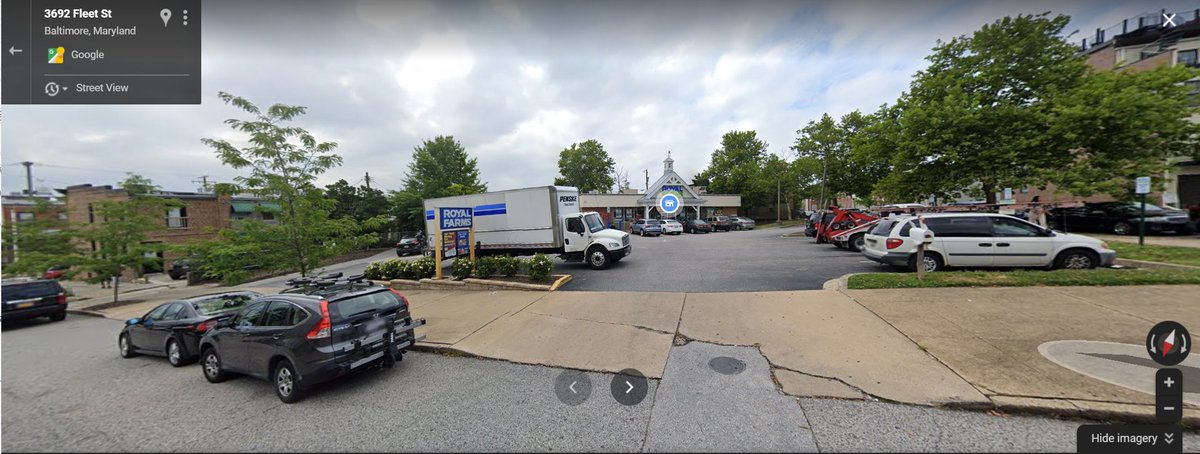A few of us in Southeast Baltimore have been having a discussion, sparked by @ElectRyanDorsey& #39;s legislation on parking minimums.
Its a complicated topic, which is best illustrated by looking at our own neighborhood.
Meet the 700 block of Grundy in Brewers Hill. 1/
Its a complicated topic, which is best illustrated by looking at our own neighborhood.
Meet the 700 block of Grundy in Brewers Hill. 1/
This is a typical pre-war neighborhood in Baltimore City. Shared party walls, built before the proliferation of cars, houses right on the street. Just, beautiful.
The previous picture was from 1938, and shows this block under construction. 2/
The previous picture was from 1938, and shows this block under construction. 2/
What& #39;s interesting is that there appears to be a shared green space in the center of each block. Today, most of them are parking, or have been converted to garages.
This is how car storage has been retrofitted into cities. 3/
This is how car storage has been retrofitted into cities. 3/
Cars impacted cities as they were developed. Compare 1940& #39;s Dundalk vs 1960& #39;s Columbia. One has straight streets that make walking reasonable. Columbia has cul-de-sacs and curved roads.
Walking to that park would be a very long walk if you walk on the road. 4/
Walking to that park would be a very long walk if you walk on the road. 4/
This has to do with land use because the FHA started putting out guidelines about the kinds of neighborhoods they would invest in, and they preferred cul-de-sacs.
Vox has a good article and video, with more on that. 5/ https://www.vox.com/2019/8/9/20792314/suburb-plan-fha-cul-de-sac">https://www.vox.com/2019/8/9/...
Vox has a good article and video, with more on that. 5/ https://www.vox.com/2019/8/9/20792314/suburb-plan-fha-cul-de-sac">https://www.vox.com/2019/8/9/...
This is when cities started putting parking minimums in their zoning codes. People had to drive. So buildings had to have parking for people to drive to.
Even private houses were required to have parking. 6/
Even private houses were required to have parking. 6/
There were other implications, such as wider streets to allow vehicles to quickly travel through residential neighborhoods, while still providing on-street parking. 7/ https://twitter.com/KostelecPlan/status/921111505537347584">https://twitter.com/KostelecP...
We are still using parking minimums today. This Royal Farms on Fleet and Dean replaced a cluster of rowhomes. And because retail requires a certain number of parking spots per square foot, most of this lot ends up being a parking lot. 8/
This is bad for the city, as it turned multiple property-tax generating units into a single unit. Its bad for people who want to walk, as it has cars regularly driving on the sidewalk, making it less safe for children. 9/
Ultimately, a question around parking minimums comes down to what it means to live in an urban environment. Are we just waiting to update our city to look like the suburbs? Or is our density an asset? Do we want to tear down buildings so we have ample parking? 10/
That& #39;s the question with parking minimums.

 Read on Twitter
Read on Twitter